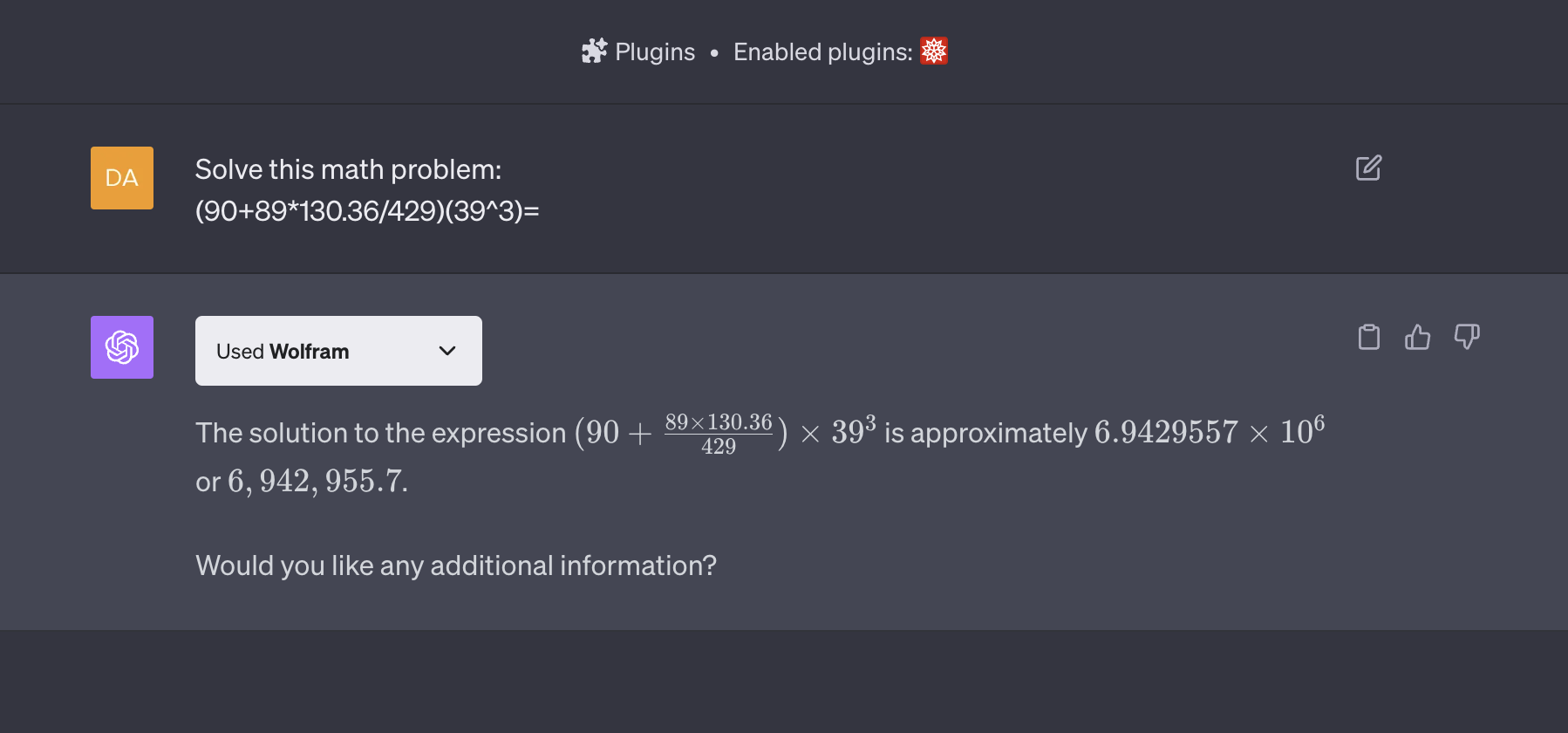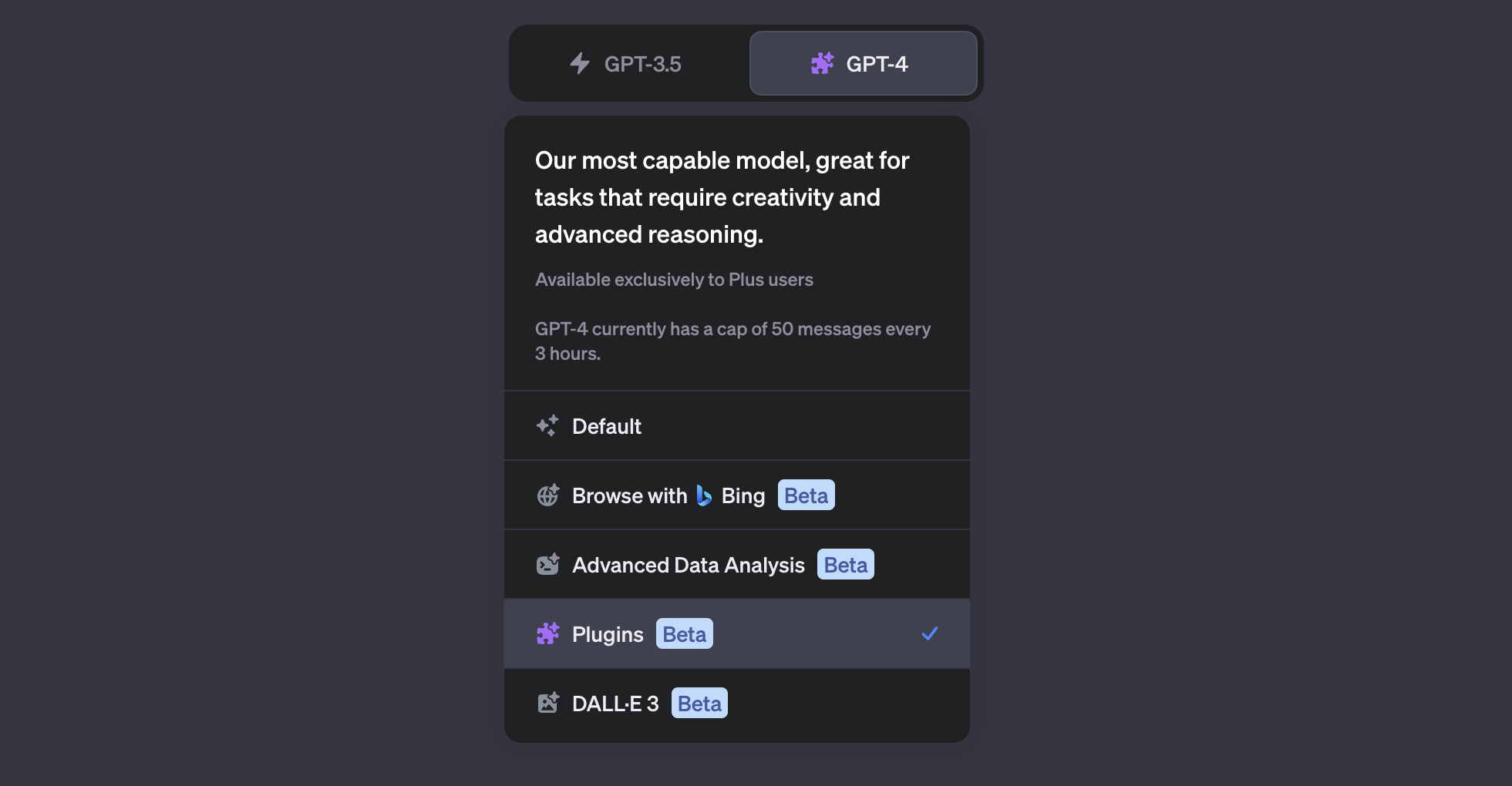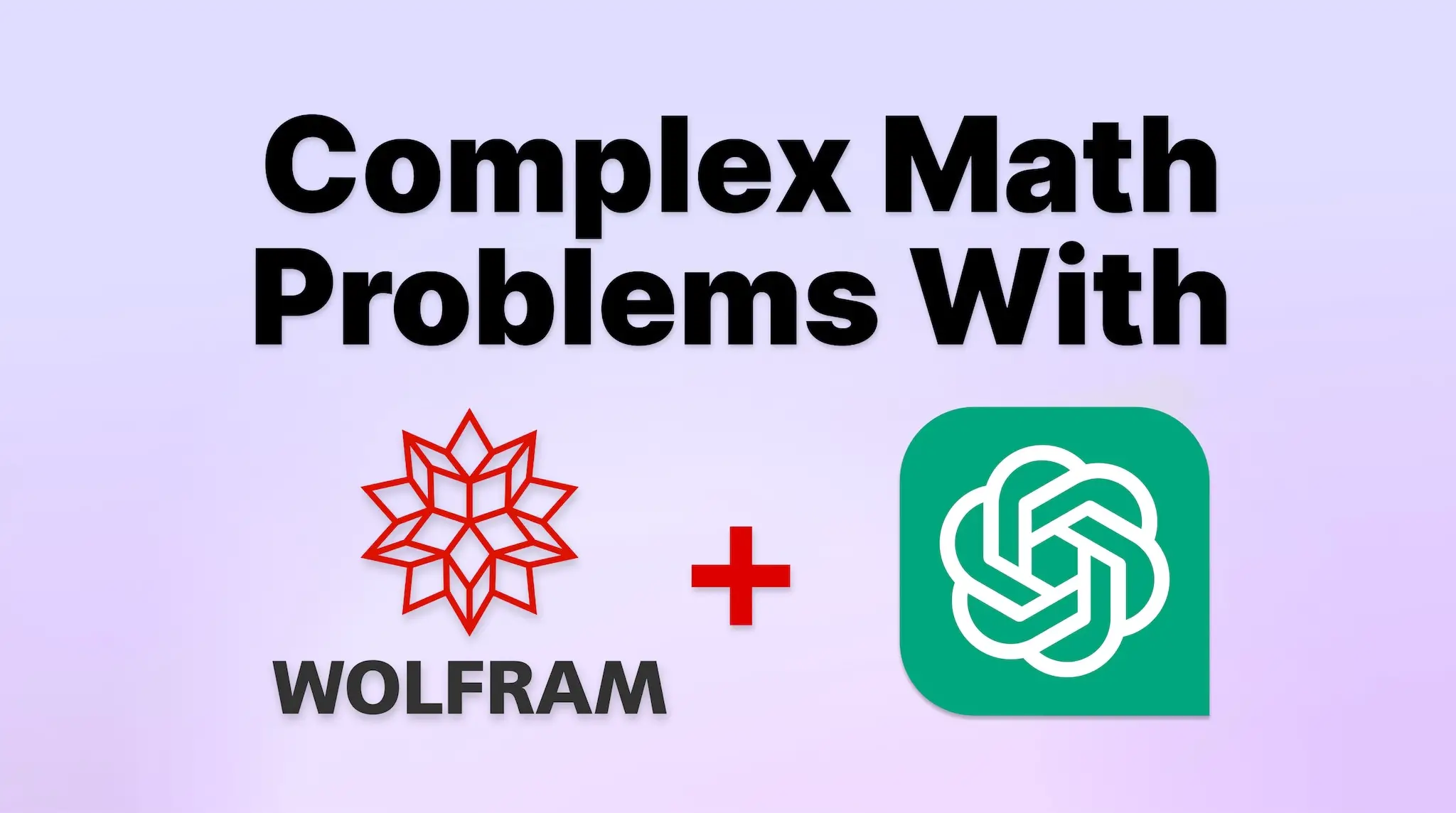ChatGPT is an artificial intelligence system developed by OpenAI that is capable of generating human-like text. It uses a large language model trained on vast amounts of text data to produce coherent and fluent responses to natural language prompts.
Since its release in November 2022, ChatGPT has demonstrated impressive language skills, including the ability to summarize lengthy texts, answer questions, and even generate code. One area that has received a lot of interest is ChatGPT’s potential to solve mathematical problems.
Understanding How ChatGPT Works
ChatGPT is built on a machine learning technique called transformer-based language modeling. It is trained on a dataset of text from books, websites, and other sources to predict the next word in a sequence. By analyzing these massive text corpora, ChatGPT learns relationships between words, concepts, and how to respond naturally to prompts.
The latest version, ChatGPT 3.5, contains 175 billion parameters, giving it more knowledge and conversational ability compared to previous versions. Despite its impressive language skills, ChatGPT does not actually understand language or possess reasoning skills – it relies on patterns learned during training.
Math Capabilities of AI in General
While modern AI systems excel at certain narrow tasks, mathematical reasoning remains challenging. Traditional programs rely on hard-coded rules and lack the flexibility to adapt. In contrast, machine learning models like ChatGPT take a statistical approach, recognizing patterns in data to make predictions.
Recent advances in natural language processing have enabled some success in solving math problems. Systems like Mathematica, Maple, and Microsoft Math Solver can provide step-by-step solutions to calculus, algebra, and other concepts. However, they are limited to what they were specifically trained on. ChatGPT demonstrates more versatility but also makes mistakes due to its probabilistic nature.
ChatGPT’s Ability to Solve Math Problems
According to tests, ChatGPT can solve simple arithmetic and some basic algebra, calculus, and probability problems. It can break down concepts and provide explanations. However, its performance declines significantly on complex, multi-step problems.
Can ChatGPT Solve Math Problems?
Yes, ChatGPT can solve very basic math problems, but its capabilities and accuracy can vary depending on the complexity of the problem. ChatGPT can handle simple math problems such as addition, subtraction, multiplication, and division.
Enhance ChatGPT’s Ability to Solve Math Problems
To enhance its math-solving capabilities, ChatGPT can be combined with the Wolfram plugin, which combines the Wolfram Alpha computing engine with ChatGPT’s ability to explain difficult concepts in plain English. This can make ChatGPT more adept at solving math problems.
However, even with the Wolfram plugin, ChatGPT’s mathematical performance is well below the level of a graduate student, according to a study. The study suggests that ChatGPT can be used most successfully as a mathematical assistant for querying facts and acting as a mathematical search engine and knowledge base interface.
In my personal experience using ChatGPT with the Wolfram Alpha plugin, I have been able to solve incredibly complex math problems with a high-level of accuracy.

How to Use ChatGPT to Solve Math Problems
Despite its limitations, ChatGPT can still be a useful math tool. Focus questions on conceptual understanding rather than complex calculations. Ask ChatGPT to explain concepts, derive formulas, and generate examples. For specific problems, provide sufficient context and constrain the prompt to guide ChatGPT.
You can even ask it to generate Python or Matlab code to numerically solve equations. Double-check any solutions, as mistakes are common. Treat ChatGPT as an assistant rather than solely relying on it. With some finesse, it can provide helpful intuition and reinforcement of basic math skills.
Solving Math Problems With The Wolfram Alpha ChatGPT Plugin
A plugin connecting ChatGPT to the Wolfram Alpha computational knowledge engine shows promise in expanding its mathematical capabilities. Wolfram Alpha contains expert-level knowledge and algorithms to perform nontrivial computations.
Early testing indicates the plugin enables ChatGPT to systematically produce correct technical data and plots beyond its native skills. To use it, first install the plugin. Then prepend prompts with “Wolfram:” to tap into Wolfram Alpha. For example, “Wolfram: integrate x^2” correctly returns x^3/3. This leverages ChatGPT’s language abilities with Wolfram Alpha’s mathematical prowess. However, the plugin is not seamless, and may produce inconsistent or unsupported results.
How to Use Wolfram Alpha With ChatGPT
Requirements
Before you can use the Wolfram Alpha plugin for ChatGPT Plus, you need to have a ChatGPT Plus account. The plugin is currently only available to ChatGPT Plus users.
Installation
Follow these steps to install the Wolfram Alpha plugin:
- Log in to your ChatGPT Plus account.
- In a new chat session, select the model drop-down menu and change the model to “Plugins”.
- Click the link to visit the plugin store.
- Locate the Wolfram plugin and click “Install”.
- Verify the plugin installation.
After installation, start a new chat session with the Wolfram plugin enabled. You’ll see a checkmark and the plugin icon in the plugin bar to indicate that the plugin is active.


Technical Use Cases
The Wolfram Alpha plugin for ChatGPT Plus can be used in a variety of ways, thanks to its broad knowledge base and computational capabilities. Here are some potential use cases:
- Interactive Learning: The plugin can be used as a tool for interactive learning, providing personalized learning experiences at your own pace and style.
- Data Querying: The plugin can be used to query datasets that the Wolfram platform has already ingested, such as data from the Census bureau or weather data.
- Mathematical Computations: The plugin can be used to perform complex mathematical computations, providing accurate and reliable results.
- Geography: The plugin is equipped with a wealth of geodata, allowing you to find answers to geography questions and visualize the answers in various ways.
- University/College Search: The plugin has extensive knowledge and data about colleges and universities, making it a useful tool for finding the perfect institution for you.
Interacting with the Plugin
When interacting with the Wolfram Alpha plugin, it’s important to formulate your queries in a way that can be processed by Wolfram Alpha or Wolfram Language. This often involves feeding natural language to Wolfram Alpha.
However, ChatGPT has also learned to write Wolfram Language itself, which can be a more flexible and powerful way to communicate.The exact way to best interact with the Wolfram plugin is still being explored, and may involve giving some “pre-prompts” earlier in your ChatGPT session.
Limitations of ChatGPT When Solving Advanced Math Problems
While ChatGPT succeeds on many routine math questions, its performance declines sharply for more complex and abstract problems requiring true mathematical reasoning:
- Lacks conceptual understanding of foundational mathematical concepts and principles.
- Cannot logically prove or derive solutions and theorems from basic axioms.
- Struggles with multi-step problems requiring deductive reasoning and systematic logic.
- Makes mistakes due to lack of symbolic manipulation skills.
- Brittle when assumptions made in problems are flawed or unclear.
- Cannot explain its own work or thought process behind solutions.
- Rigid reliance on recognizing surface patterns limits adaptability to novel problems.
- Gaps in advanced mathematical knowledge limits breadth and depth.
- Unable to identify or recover from its own errors.
These limitations stem from ChatGPT’s statistical, pattern-matching approach which does not emulate true human mathematical reasoning. Users should be cautious – while ChatGPT can solve many textbook-style math problems correctly, its solutions may not always be sound mathematically for more complex questions.
Examples of Problems ChatGPT Can and Cannot Solve
Here are some specific examples illustrating the types of math problems ChatGPT can successfully solve contrasted with ones it may fail on:
Can solve accurately:
- Simple arithmetic like computing 32 + 97 or 752 ÷ 6.
- Two-step algebraic equation like 3(x + 4) – 5 = 29.
- Finding a circle’s circumference with radius 7cm.
- Evaluating sin(30°) using a calculator.
- Taking derivative of 2x^3 + 5x – 7 using power rule.
Struggles to solve correctly:
- Geometric proof that sum of angles in a triangle equals 180°.
- Complex calculus problems with multiple constraints.
- Identifying and explaining mathematical flaws in a falsely posed statistics question.
- Abstract number theory problem using modular arithmetic.
- Double integration of a complex trigonometric function.
As illustrated, ChatGPT performs well on straightforward problems but lacks the advanced reasoning for complex questions and proofs across mathematical disciplines. Open-ended problems requiring adaptability also challenge ChatGPT.
Comparing ChatGPT With Other AI Models
ChatGPT excels in fluency but falls short of other models in accuracy. In my personal experience solving math problems with AI, I have found Anthropic’s Claude 2 AI model to be superior when it comes to math reasoning. Supposedly, Claude 2 can solve some math problems at a high school level. However, if using the Wolfram Alpha plugin, ChatGPT Plus is superior. In my opinion, Claude 2 makes fewer mistakes, but it also lacks ChatGPT’s conversational nature.
Google’s Bard aims to combine accuracy with chatbot-style interaction. Initial demos showed promise in answering math questions correctly with explanations. However, Bard has exhibited inconsistencies and factual errors, limiting its reliability. No system has definitively exceeded human performance in mathematical problem solving. Each has tradeoffs between capabilities that continue to be researched.
How OpenAI Can Improve ChatGPT’s Math Ability
While its current math skills are modest, ChatGPT has room to improve. OpenAI researchers are exploring techniques like reinforcement learning to enhance reasoning ability. Fine-tuning on technical datasets could sharpen its mathematical knowledge. Integrating symbolic computation like the Wolfram plugin offers another avenue. Specialized spin-offs trained exclusively in mathematical domains may one day rival human ability.
In education, ChatGPT could assist in tutoring, providing an interactive complement to traditional teaching. The convenience of an AI calculator and tutor could also boost interest and proficiency in mathematics. However, care must be taken to avoid over reliance, as mistakes remain likely. Going forward, striking the right balance between AI assistance and human judgment will be key.
Efforts to Improve ChatGPT’s Math Reasoning Abilities
Given the clear limitations, researchers are actively exploring ways to enhance ChatGPT’s mathematical reasoning skills:
- Novel training techniques like reinforcement learning to strengthen logical consistency.
- Integration with computer algebra systems like Mathematica to add symbolic computation abilities.
- Math-focused datasets and training to build ChatGPT’s knowledge base across fields.
- Spin-off specialized math models not designed for general conversation.
- Allowing user feedback to correct responses and improve through interaction.
- Structured workflows guiding ChatGPT step-by-step through multistep problems.
- Enabling explanation of its work and thought process to identify flaws.
- Addition of math plugins connecting it to established solvers like Wolfram Alpha.
There are promising avenues to improve ChatGPT’s math skills to become a more robust AI assistant. However, replicating human-level mathematical reasoning remains an immense challenge.
Promising But Limited Math Capabilities
While ChatGPT has demonstrated some promising capabilities in solving math problems, its skills are currently quite limited. It performs reasonably on simple problems but lacks the advanced reasoning ability to handle complexity and ensure accuracy.
The mathematical accuracy of ChatGPT has shown significant fluctuations over time, according to various studies. These fluctuations, often referred to as “drift,” have been observed in different versions of the model, such as GPT-3.5 and GPT-4, and across different tasks, including solving math problems.
A study conducted by Stanford University found that the accuracy of ChatGPT in solving a simple math problem dropped from 98% to 2% within a few months, from March to June 2023. The same study also found that the GPT-3.5 model had an opposite trajectory, with its accuracy increasing from 7.4% in March to 86.8% in June.
A study evaluating ChatGPT’s capabilities in the Mathematics Test of the Vietnamese High School Graduation Examination found that while ChatGPT had an accuracy rate of 83% at a certain difficulty level, its accuracy dropped to 10% as the difficulty level increased
Techniques like fine-tuning, integration with computational engines, and improved training methods may help overcome these limitations in the future. ChatGPT is not yet ready to replace human mathematicians and teachers, but it may become a useful tool to assist and encourage learning if used prudently. As AI research progresses, models like ChatGPT have the potential to provide increasingly useful mathematical reasoning – but true human-level ability remains on the horizon.
Can ChatGPT solve complex math problems?
ChatGPT can tackle many complex math problems when given clear prompts. It covers areas from algebra to statistics but doesn't inherently perform symbolic calculations like specialized software. For highly intricate problems or step-by-step solutions, dedicated mathematical software might be more suitable. It's crucial to double-check ChatGPT's solutions for advanced topics.
Why does ChatGPT provide incorrect answers to math problems?
ChatGPT sometimes provides incorrect answers to math problems due to a combination of factors related to its design, training data, and the nature of its underlying architecture. ChatGPT is not designed to perform mathematical calculations. Instead, it predicts the next text in a sequence based on patterns and associations learned from its training data 3 1 . This means that while it can often provide correct answers to basic math problems, it can also make mistakes, especially when the math gets more complex
Can I improve the accuracy of ChatGPT's math problem-solving?
To enhance ChatGPT's math problem-solving accuracy, it's essential to use clear and specific prompts, providing context such as age and occupation. Leveraging plugins, especially the Wolfram Alpha, can augment its computational skills. For personalized practice, ask ChatGPT to generate questions and offer feedback on your solutions. Integrate ChatGPT into your math curriculum as an auxiliary tool, customizing to each learner's requirements. Always remember to fact-check mathematical problems with ChatGPT and double-check its provided solutions.
How has the mathematical accuracy of ChatGPT changed over time?
The mathematical accuracy of ChatGPT has shown significant fluctuations over time, according to various studies. These fluctuations, often referred to as "drift," have been observed in different versions of the model, such as GPT-3.5 and GPT-4, and across different tasks, including solving math problems.
